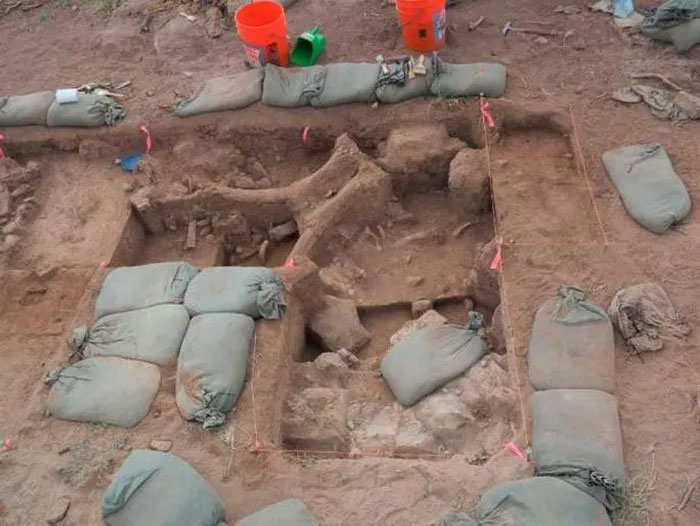Renowned paleontologist Professor Timothy Rowe from the University of Texas, USA, made a life-changing discovery in an unexpected place: Two 37,000-year-old monsters that changed human history right in his own backyard in New Mexico.
According to Ancient Origins, a neighbor of Professor Rowe alerted him upon discovering a massive tusk protruding from the ground on a hillside in his property, pointing directly towards the professor’s house. The excavation process revealed a large collection of fragmented mammoth remains scattered across the area, some partially exposed and others buried.

Excavation site on Professor Timothy Rowe’s property – (Photo: UNIVERSITY OF TEXAS AT AUSTIN)
The paleontologist, along with colleagues from the University of Texas, studied and identified the remains belonging to two different ancient creatures: a mature mammoth and a juvenile, both of which met unnatural deaths.
According to a paper published in the journal Frontiers in Ecology and Evolution, the remains of these mammoths are approximately 37,000 years old and show clear signs of butchering. This explains the scattered bone fragments found throughout the site.
The significance of this pair of “monsters” increases as they provide tangible evidence that humans occupied America much earlier than previously thought.
They also discovered a sophisticated mammoth butchering toolkit made from bone, found among the mammoth bones, exhibiting clear signs of deliberate breakage and sharpening into various types of sharp blades.
CT scan images further confirm this, revealing tiny fracture networks in the bones, consistent with tool-making and butchering activities, which cannot be explained by any natural forces.
A broader examination of the entire site and surrounding areas also indicates that ancient inhabitants used controlled fires to shape the landscape.
Overall, the professor not only encountered luck in his lifelong quest for monsters but also accidentally uncovered an extremely ancient civilization in America.
This discovery has led experts to suggest re-evaluating human history, indicating that the Americas were settled by two completely distinct groups of people, with the other group being the Clovis culture, as previously known.


















































